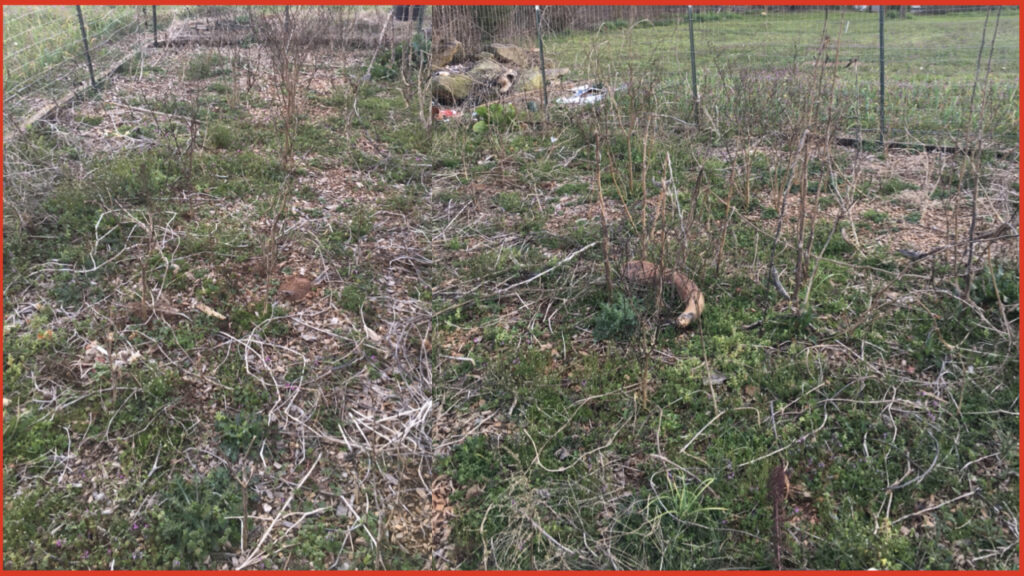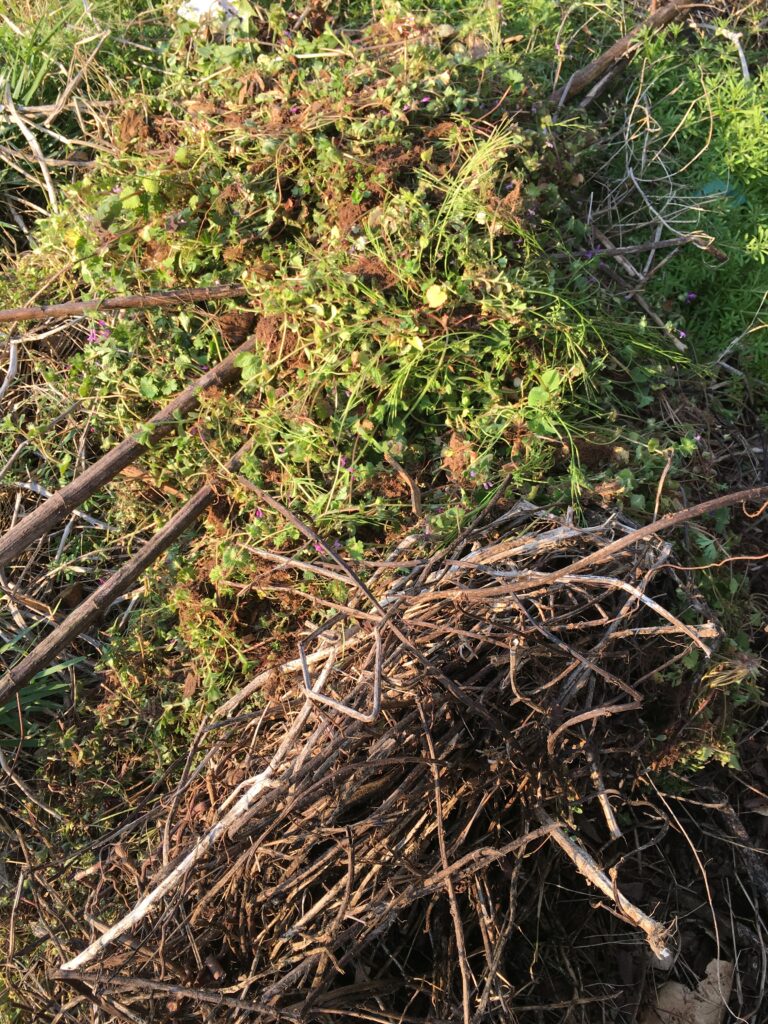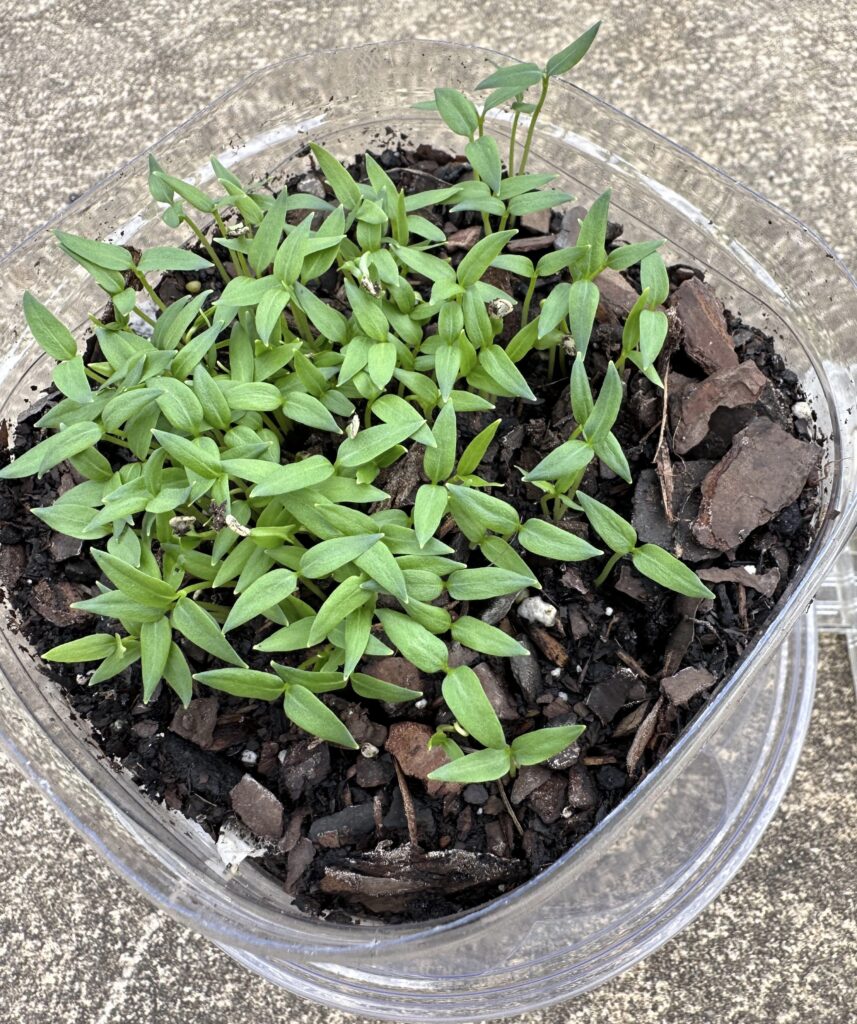Watch following video about when and how to clean organic gardens for spring planting.
The spring season officially started on March 20, 2023. March is still considered a winter month because we will have late cold snaps, frosts, freezing rain and even sporadic snow. However, now is the best time to clean up gardens because we generally get some warm days that can be used for cleaning up and preparing the gardens for spring planting.
After the last harvest, most of the vegetables like green peppers, tomatoes or eggplants may die because of freezing temperatures or they may be killed by the first frost at the end of fall season or beginning of winter leaving the garden with lots of dead plant debris (Photo 1). If left on the ground, these dead plants will be the main hurdle for transplanting of seedlings, sowing of seeds and germination. They may also serve as hiding places for the insect pests like flea beetles and leaf-footed bugs that could become a serious problem for young seedlings during spring.
Some winter-hardy or cool-season weeds will start germinating and growing up in the garden early in the spring (Photo 1). These weeds will make it difficult for transplanting of seedlings and sowing of seeds in the spring. Also, weeds may serve as alternate hosts to the insect pests like aphids that can damage all the host crops that would be planted during spring. These weeds will also compete with young transplanted or germinated seedlings for nutrients that in turn can affect the growth of crop plants during the growing season.
Therefore, make sure to pull out all the dried plants and their stumps from the planting area by hand. so that the planting area would be clean and ready for transplanting seedlings or planting seeds in the spring (Photo 2). Also, remove all the dried vines of pumpkins, cucumbers and beans that are left hanging on the garden fence during winter as they may block the sunlight during the growing season (see video above).

If dried and fragile plants lay on the ground, they can be easily collected using a rake. However, some of these fragile plant parts can be left on the ground as they will easily break down and decompose and could serve as a source of nutrients for crops throughout the growing season (Photo 1).
However, remove all the winter hardy and cool-season weeds using a hand hoe so that the planting area would be clean (Photo 2) and ready for transplanting seedlings or planting seeds in the spring (see video above).
Then dump all the removed previous crop debris and winter-hardy or cool-season weeds in the compost pit (Photo 3) where they will turn into compost that can be used as organic fertilizer containing essential macro- and micronutrients required for the healthy growth of plants in the next growing season (see video above).
So the cleaned planting area is ready for planting in March but the temperature in March is comparatively cold and therefore, it is not a good idea to rush in planting warm season crops directly in the garden. However, seeds of some cool-season crops like beets, broccoli, cabbage, cauliflowers, kale, lettuce, peas, radishes, spinach and turnips can be directly planted if there is optimum moisture and temperature in the soil as these crops have the ability to withstand the last frost days in March and early April.
Also, March is the best month to order the seeds of warm-season vegetables like tomatoes, peppers, eggplants and summer squash from reliable organic seed suppliers. Start warm-season seeds indoors so that their seedlings will be ready for transplanting when temperature goes up in the spring (Photo 4).



